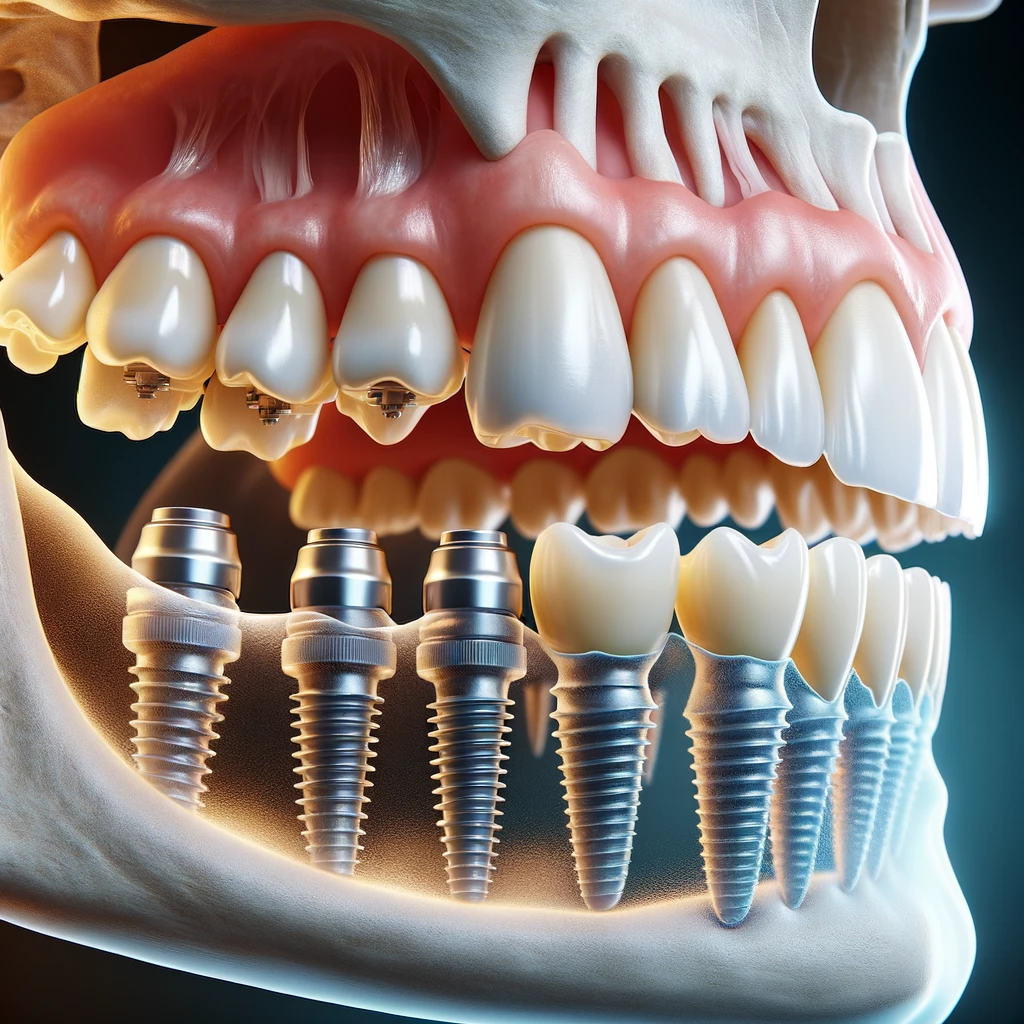The Ultimate Guide To Dental Sense
4 Simple Techniques For Dental Sense
Table of ContentsThe Ultimate Guide To Dental SenseAll about Dental SenseDental Sense for DummiesThe Best Guide To Dental Sense
are medical devices operatively implanted into the jaw to bring back an individual's capability to eat or their look. They supply assistance for artificial (fake) teeth, such as crowns, bridges, or dentures. When a tooth is lost due to injury or illness, an individual can experience complications such as quick bone loss, faulty speech, or modifications to eating patterns that result in discomfort.Dental implant systems include an oral implant body and dental implant joint and may also consist of an abutment fixation screw. Front tooth filling. The oral implant body is operatively placed in the jawbone in area of the tooth's root. The oral implant joint is usually connected to the implant body by the abutment fixation screw and expands through gums right into the mouth to support the attached synthetic teeth
(https://salty-hope-7c7.notion.site/Transform-Your-Smile-with-Expert-Dental-Services-178171a6c2a68016ac50cca51ef9527c?pvs=4)Framework of The Oral Implant System picking oral implants, speak to your dental supplier concerning the possible benefits and dangers, and whether you are a prospect for the treatment. Things to consider: Your total health and wellness is an important consider identifying whether you are an excellent candidate for oral implants, the length of time it will take to recover, and the length of time the dental implant might stay in area.
Smoking might impact the healing process and reduce the lasting success of the implant. The recovery process for the dental implant body might take a number of months or longer, during which time you normally have a short-lived joint instead of the tooth. the dental implant treatment: Carefully adhere to the dental health directions provided to you by your oral copyright.
Getting My Dental Sense To Work
Implant failure can result in the demand for another procedure to repair or replace the dental implant system. Brings back the capability to chew Brings back cosmetic look Assists maintain the jawbone from shrinking due to bone loss Protects the wellness of the surrounding bone and gum tissues Helps keep surrounding (nearby) teeth secure Boosts high quality of life Damage to bordering all-natural teeth throughout implant placement Injury to the surrounding cells throughout surgical treatment, such as sinus opening Injury during surgical procedure (for instance, fracture of surrounding jawbone) Insufficient feature, such as seeming like the teeth do not bite together typically A sensation that the tooth hangs or turning in location resulting from a joint screw loosening Implant body failure (looseness of the implant body) due to systemic infection, which may be much more likely in individuals with unchecked diabetes due to regional infection in bone and periodontals sustaining the implant body as a result of postponed recovery, which may be most likely in patients that smoke Difficulty cleaning up the gum tissues around the dental implant, resulting in poor dental hygiene Without treatment periodontal illness Post-surgical pins and needles as a result of nerve impingement or damage Constantly inform healthcare providers and imaging professionals that you have oral implants prior to any magnetic resonance imaging (MRI) or x-ray treatments.
FDA is not conscious of any damaging events reported for MRI or x-ray procedures with oral implants. Oral implants systems are normally made of products that adhere to global agreement criteria of the International Company for Standardization (ISO) or ASTM International. These criteria have information of what makes a secure product.

A dental implant is a structure that changes a missing tooth. With screw-like gadgets, the specialist inserts a dental implant right into the jawbone, and it serves as an anchor for a synthetic tooth, called a crown. A gadget called an abutment links the artificial tooth to the dental implant. The crown is tailor-made to fit the person's mouth and match the shade of their teeth.
Dental Sense for Dummies
Some individuals are not qualified for oral implant surgery. It is for dental specialists to operate on individuals with: severe illnessuncontrollable metabolic diseasebone or soft cells illness or infectionIf these issues are dealt with, an individual can have the surgical procedure. In, oral surgeons avoid operating on people with: If individuals with any of the above undertake oral implant surgical treatment, there is a greater danger of the implant stopping working.

Oral dental implant surgical treatment is an individualized process. Offer you time to heal. Affix the article and final crown, bridge or denture.
Next, your surgeon will thoroughly position the dental implant right into your jaw. Lastly, your surgeon will reposition your gums and shut the laceration with stitches. If your dental implant is near the front of your mouth, your dental expert will certainly make a short-term tooth for you to put on till you recover. That means, you will not have a gap in your smile while you recover.
10 Easy Facts About Dental Sense Explained
Your supplier can inform you what to anticipate in your scenario. Throughout the healing phase, your jawbone should fuse to the dental implant. This process, called osseointegration, is important for stability and lasting success. This process can take anywhere from three to nine months. In some cases, it might take longer.
As soon as your implant heals, your dentist can affix the abutment (little connector message) and your last restoration (crown, bridge or denture). This usually takes regarding one hour to complete and might need a second small surgical treatment. You should not really feel any kind of pain throughout your oral implant treatment due to the fact that your service provider will use medicine to numb your periodontals.